Rosemary salt is a kitchen hero that can be used to enhance so many dishes, once you've tried it you'll never go back! It takes two minutes to make and is one of my number one food hacks to add flavor fast.
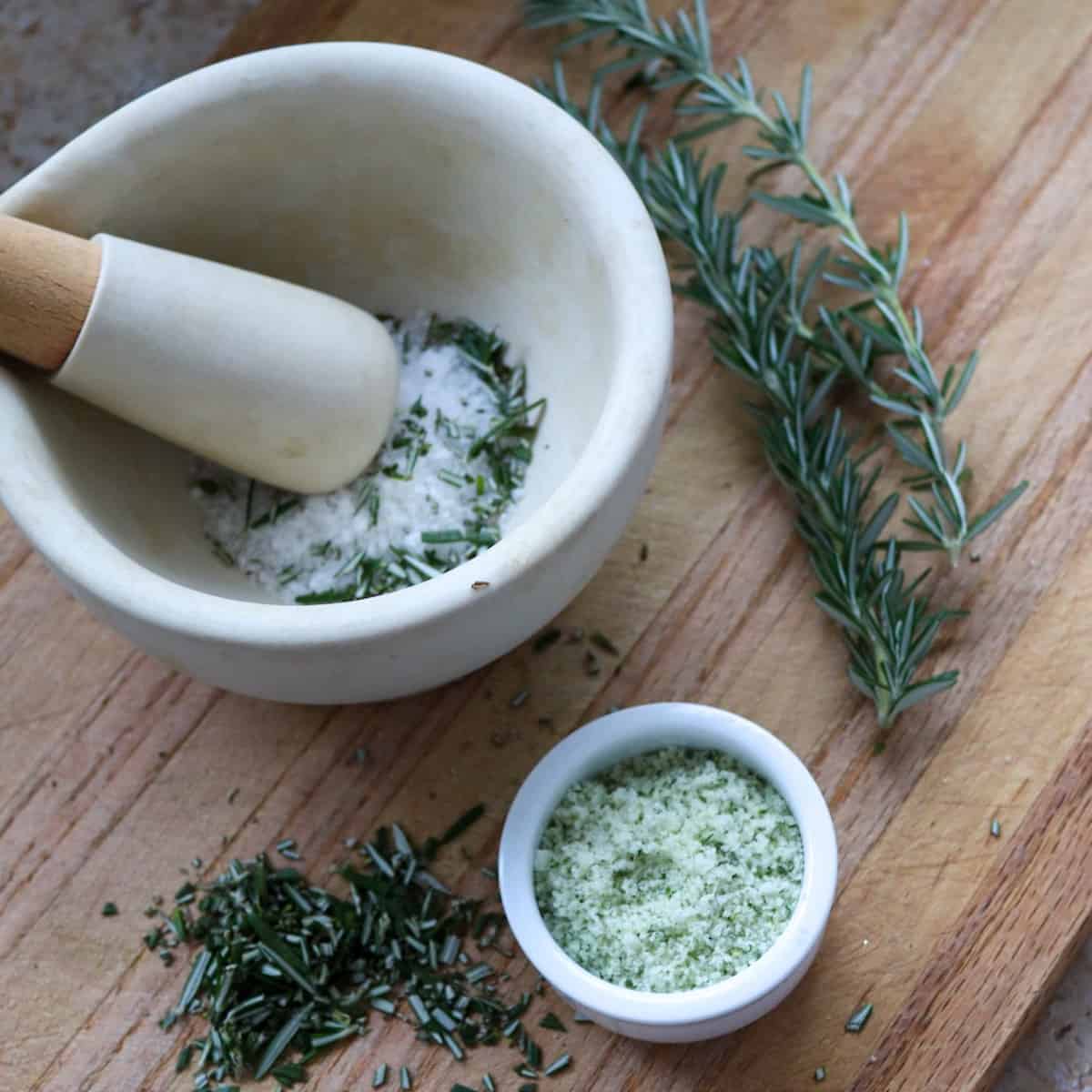
The fragrant and earthy tones smell like heaven and taste even better. You can make rosemary salt in batches as it keeps and it works just as well in winter months scattered over a roast rump of lamb as it does on some chargrilled chicken or halloumi on the BBQ in summer. It can be used to jazz up roasted vegetables like carrots and potatoes, and don't even get me started on how good it tastes with dark chocolate. Yes, really.
Jump to:
Rosemary-infused sea salt is very simple to make at home, you don't need to buy a fancy store-bought product, and especially if you grow your own herbs (like me) it's as easy as stepping out into the garden to grab a few sprigs and away you go. This herb salt recipe is better than store-bought options and makes a great edible gift in new homeowner gift baskets.
Why you should try this rosemary salt DIY
- Flavorful Enhancement: DIY rosemary salt offers a delicious addition and aromatic flavor that enhances the taste of your dishes.
- Customizable Blend: Making your own rosemary salt allows you to customize the ratio of rosemary to salt, enabling you to create a blend that perfectly suits your taste preferences.
- Cost-effective and Long-lasting: making rosemary sea salt at home is an easy way to avoid extra cost of store-bought salt, a little goes a long way. It can be stored for an extended period, providing you with a supply of homemade seasoning for a very long time.
Having a herb garden is one of my top recommendations for home cooks. Even a window box or one big pot can save you so much time and money as well as bring the joy of eating homegrown produce.
Anyway, I enjoy serving this rosemary salt, especially with chicken like this butterfly chicken breast recipe which is another fast and fabulous dish to make life easier.
What is rosemary salt made of? (Ingredients)
- Salt: This can be any type of salt, you prefer.
- Fresh rosemary: available in most grocery shops, or grow your own!
- Lemon zest (optional): this can add a bit more zing to the rosemary salt recipe, but it is entirely up to you.
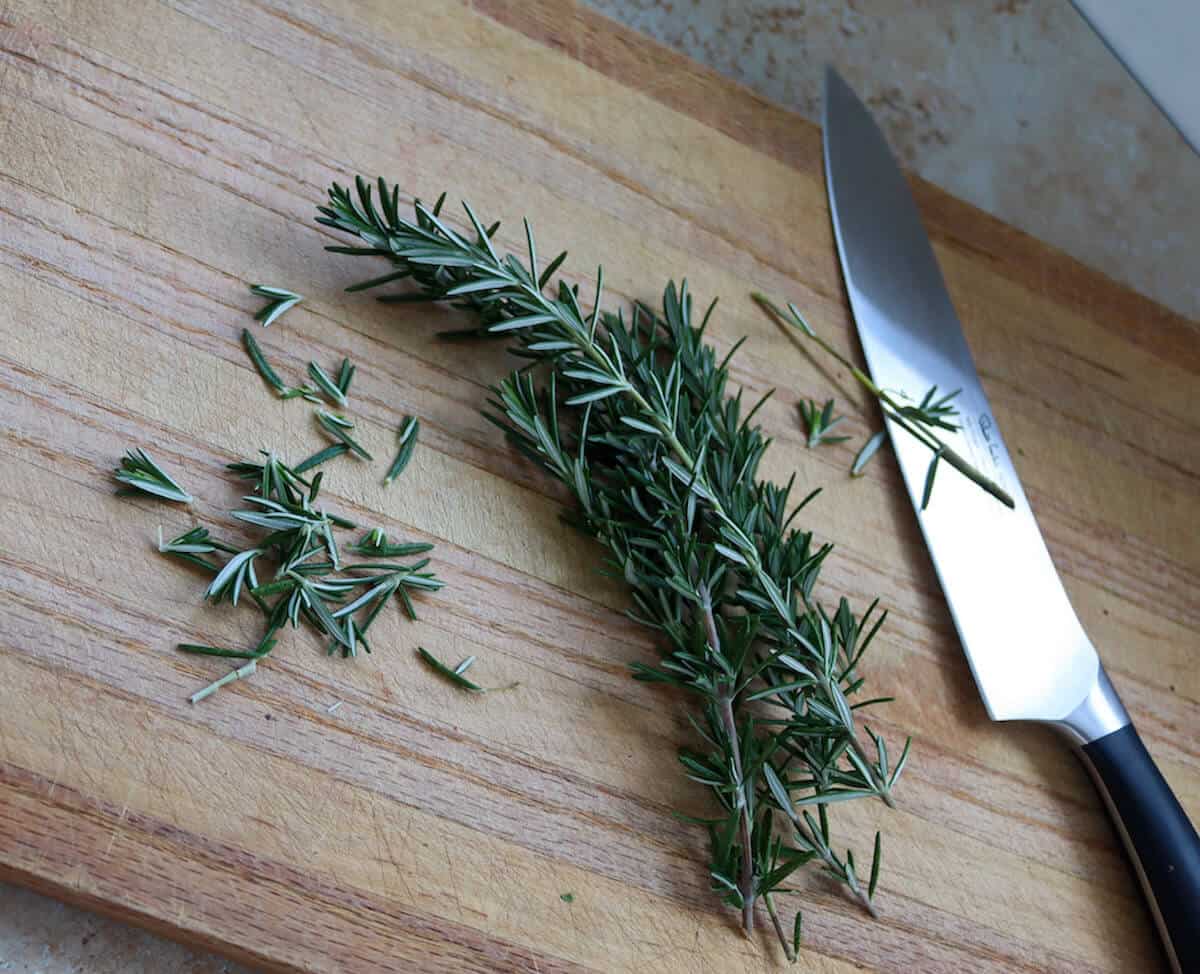
Rock salt vs sea salt
Sea salt is produced by the evaporation of saltwater from the ocean. Rock salt is mined in solid form. Both sea salt and rock salt are far less processed than table salt, which contains additives to prevent clumping and loses a lot of the natural minerals like potassium and calcium in its production. I personally prefer using sea salt to rock salt in cooking, partially because I trained as a chef at a culinary school near the British coast, and it was readily available! Cornish sea salt is the best salt to use for home cooking, in my humble opinion.
How to make rosemary salt
- Remove the leaves from the rosemary sprigs and place them into a food processor with the sea salt.
- Blend the rosemary salt together until it reaches your desired consistency.
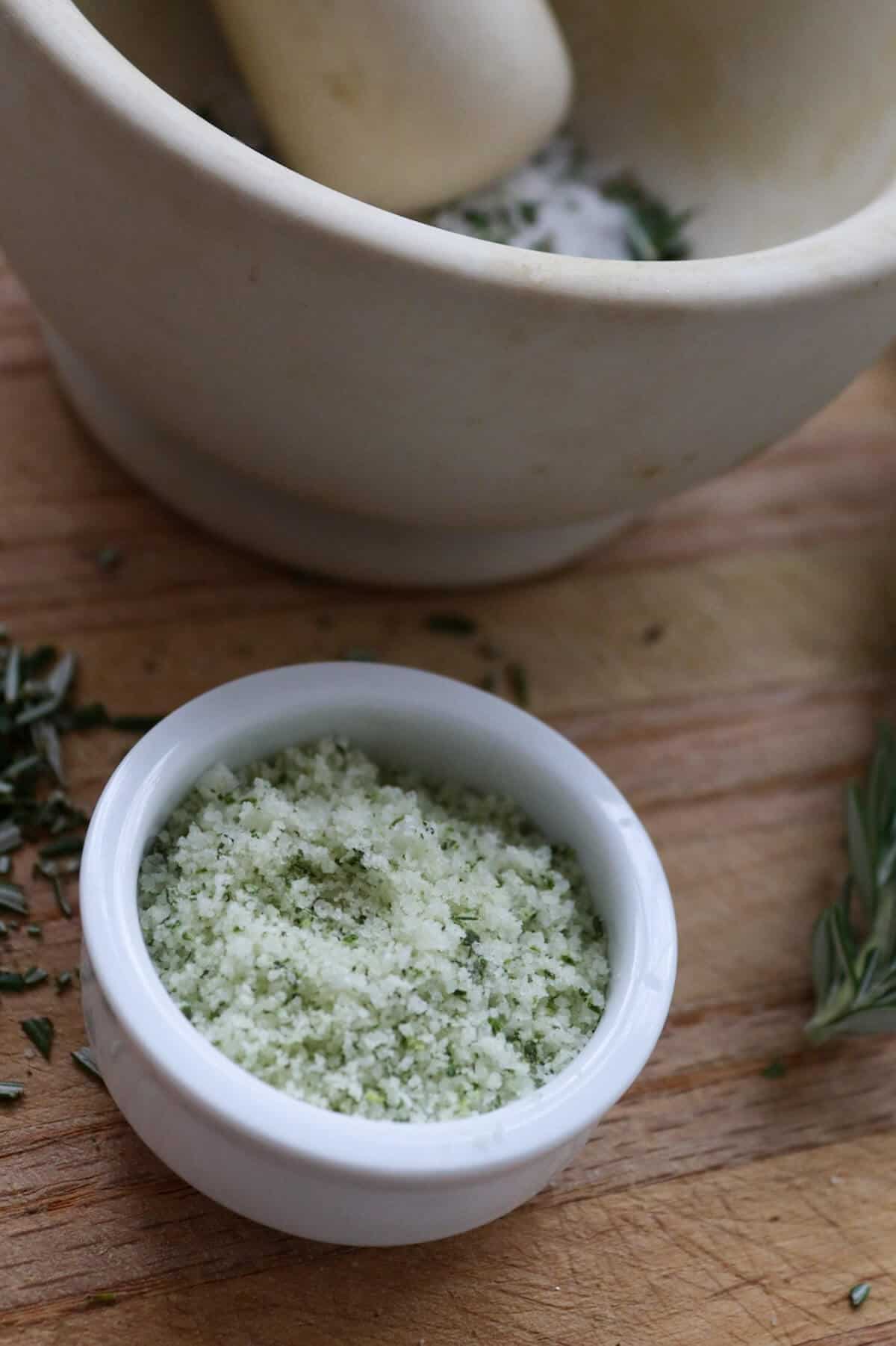
What if I don't have a food processor/only want to make a small amount?
Alternatively, you can use a pestle and mortar instead! Or if you don't have one of those, take a large pinch of the sea salt crystals, finely dice your rosemary leaves and put them both on a clean work surface. Using a rolling pin, roll back and forth over it to crush salt into fine crystals and infuse the rosemary with it.
Can I use other herbs?
Of course! Why not try this herb-infused salt recipe with tarragon (also great with chicken), thyme or dried garlic?
Making rosemary salt with dried rosemary
When using dried herbs, the rule is to divide the quantity needed by half, so for every teaspoon of fresh herbs, you will need half a teaspoon of dried, and so on. This is because dried herbs have a more intense and potent flavor than fresh herbs.
To make rosemary flavored salt with dried rosemary, follow these steps:
- If you don't have dried rosemary already, you will need to start by drying the fresh rosemary. Lay the rosemary sprigs on a rimmed baking sheet in a single layer, and place it in the oven, therefore dehydrating it at a low temperature until it's dry and crispy.
- Once the rosemary is dry and crisp, allow it to cool completely.
- Use a small food processor or coffee grinder to grind the dried rosemary with any type of salt you prefer until it is well incorporated into a texture that you like.
- Alternatively, you can grind the dried rosemary and coarse sea salt separately and then combine them in a mixing bowl. Mix well to incorporate the rosemary into the salt.
- Transfer the rosemary salt to an airtight container or jar with a tight lid. Store it in a cool, dry place away from direct sunlight. Now you have homemade flavored salt that can be used to add a delicious flavor to your dishes.
Equipment
You will need a knife and food processor, or alternatively, a pestle and mortar or rolling pin.
I use Robert Welch knives.
Storage
Store the rosemary salt in an airtight container and use it as needed.
Top tip
I like my rosemary infused salt a little more coarse and still with discernible little pieces of rosemary in it. I find that this looks better visually as if you blend it too fine, it can turn some things green!
FAQ
No, rosemary does not naturally contain salt. Rosemary is a herb that is known for its aromatic and earthy flavors, but it does not inherently have any salty content.
Rosemary seasoning, such as rosemary salt, is used to enhance the flavor of various dishes. It adds the best flavor to roasted vegetables, pasta dishes, and other savory recipes. Making your own rosemary salt can be a great way to create unique seasoning salts for different culinary creations.
Rosemary salt stored in a glass jar or mason jar with tight jar lids can have a long shelf life, especially in a dry climate. However, over time, the flavor and potency of the rosemary may diminish, but it does not necessarily go bad.
Rosemary salt uses!
Try these recipes below with your homemade rosemary sea salt.
📖 Recipe
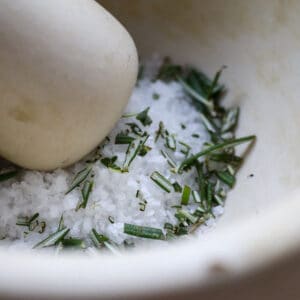
Rosemary salt
Equipment
- 1 pestle and mortar (alternative)
Ingredients
- 50 grams (1.76 oz) sea salt
- 1 tablespoon rosemary (fresh)
- ½ teaspoon lemon zest (optional)
Instructions
- Place the sea salt into a blender or food processor
- Remove the rosemary leaves from the stalk, chop them into smaller pieces and add to the salt
- Blend the rosemary salt until the sea salt crystals have reached the desired consistency.
- Alternatively, grind the sea salt and rosemary together using a pestle and mortar or on the kitchen counter top using a rolling pin




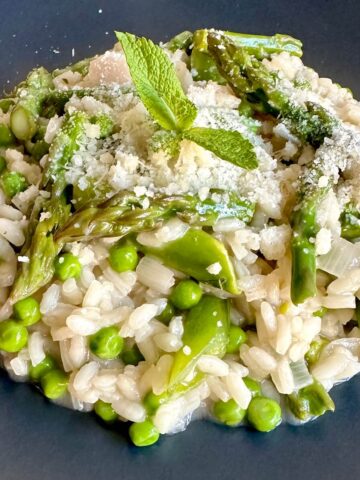
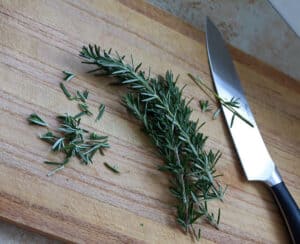
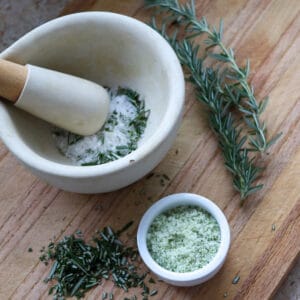




Rebecca says
What a great idea, this made my chicken dish taste truly delicious. Thank you for the recipe!